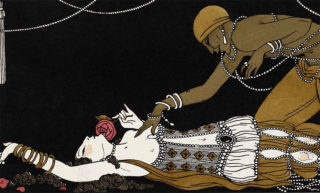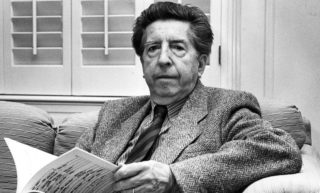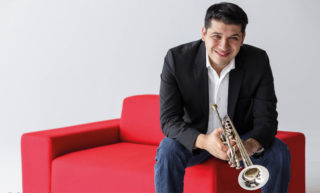Freedom
Sinfonieorchester Basel
21 and 22 November 2018
Nelson Goerner, piano
Michal Nestorewicz, conductor
Krzysztof Penderecki - Agnus Dei from the Polish Requiem
Fryderyk Chopin - Concert for piano and orchestra No. 1
Jean Sibelius - Symphony No. 2
Few composers have done more for the identity of their home country than Jean Sibelius (1865 – 1957) and Fryderyk Chopin (1810 – 1849). While the titles of Sibelius’s compositions, like Finlandia, the Karelia suite and Kalevala (Finnish epic poetry), speak for themselves, in Chopin’s case it is rather the type of music. The polonaises and mazurkas, both Polish dances, are at the core of his output.
By contributing to the creation of a national identity Chopin, Sibelius and Penderecki, the third composer on this program, were consciously or unconsciously instrumental in the Finnish and Polish struggle against Russian domination, hence, the overarching theme – Liberté or Freedom.
Chopin composed his first piano concerto in 1830, the year of the Polish revolt against its large neighbour. The heroic, climbing main theme, set out by the orchestra right at the beginning of the first movement, is assumed to be a musical impression of the revolution. However, the following melancholic modification of the same theme reveals the dark side of the uprising as well.
Diverting from the struggle for independence, in the second movement Chopin reminisces about his love for the singer Konstanze Gladkowska. The main theme of the final Rondo, best heard in the piano’s first few bars and based on the Krakowiak, an upbeat, syncopated dance, is again strongly Polish in character.
Later freedom fights inspired Penderecki (b. 1933) to write his Polish Requiem. The Lacrimosa commemorates the union protests against the puppet government at the Gdansk shipyards in the late 1970s and is dedicated to its leader Lech Walesa. The Dies Irae honors the Warsaw Uprising of 1944. The Agnus Dei, originally for an a capella choir but here in an arrangement for string orchestra, was dedicated to cardinal Stefan Wyzyński who, standing up against both Nazis and communists, is considered to be a national hero and may symbolize the resistance against the protracted German and Russian attempts to increase their area of control by annexing parts of Poland. The piece evolves around the opening theme Agnus Dei (Lamb of God) interwoven with the immediately following theme Qui tollis peccata mundi (Who takes away the sins of the world).
The concert is concluded by Sibelius’ Second Symphony, also known as the Symphony of Independence, a highly disputed epithet. While some musicologists hear the Finnish quest for independence in the grand, final movement, it is uncertain if the composer had a nationalistic program in mind. We do know that the work, Sibelius’s most performed symphony, was conceived during a period of russification which Czar Nicholas II had imposed upon the then Grand Duchy of Finland and gave rise to the reinforcement of the resistance movement. Perhaps the best proof that Sibelius may have had the struggle for freedom in his mind’s eye (or ear), can be found in the second movement. A note in the score reminds us of the encounter between Don Juan and Death while later on the name of Christ is mentioned, prompting some to believe Sibelius referred to the resurrection of his native Finland.
With an assertive Russia on Europe’s eastern flank, the music is as relevant as it ever was.
These English program notes have been published in the magazine (No. 3, 2018/2019) of the Sinfonieorchester Basel.








Comments